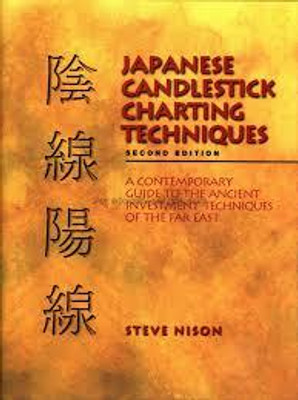Japanese Candlestick Charting Techniques Steve Nison (Paperback, Steve Nison)(Paperback, Steve Nison)
Quick Overview
Product Price Comparison
apanese Candlestick Charting Techniques is a popular method used by traders and analysts to visualize and interpret price movements in financial markets, particularly in the context of stocks, forex, commodities, and other tradable assets. The technique originated in Japan several centuries ago and gained widespread recognition in the Western world during the late 20th century. It involves using candlestick charts to represent price data in a more visual and intuitive manner compared to traditional line or bar charts. Here's a breakdown of the key components and concepts within Japanese Candlestick Charting Techniques: Candlestick: Each individual data point on the chart is represented by a candlestick. A candlestick consists of four main parts: the body, the wick (or shadow), and possibly two additional parts for certain patterns ŌĆō the upper shadow and the lower shadow. Body: The body of the candlestick represents the price range between the opening and closing prices of a trading period (e.g., a day, an hour, etc.). The color of the body varies depending on whether the closing price is higher or lower than the opening price. If the closing price is higher, the body is usually depicted as a hollow or white candle, while a filled or black candle represents a closing price lower than the opening price. Wick (Shadow): The wick, also known as the shadow, extends from the top and/or bottom of the candle's body. It indicates the highest and lowest prices reached during the trading period. The upper wick extends above the body and represents the high price, while the lower wick extends below the body and represents the low price. Bullish and Bearish: A bullish candlestick (hollow/white) indicates that the closing price is higher than the opening price, suggesting potential upward momentum. A bearish candlestick (filled/black) shows that the closing price is lower than the opening price, suggesting potential downward momentum. Patterns: Japanese Candlestick Charting Techniques emphasize various patterns that can form using multiple candlesticks. These patterns provide insights into potential market trends and reversals. Some common patterns include: Doji: A candlestick with almost equal opening and closing prices, indicating indecision in the market. Engulfing Pattern: A pattern where a small candlestick is followed by a larger one that engulfs it. It suggests a potential reversal. Hammer and Hanging Man: Single candlestick patterns that resemble a hammer or hanging man. These can indicate potential trend reversals. Three White Soldiers and Three Black Crows: Patterns formed by three consecutive bullish or bearish candlesticks, respectively, which suggest strong momentum. Support and Resistance: Candlestick charts are often used to identify levels of support and resistance, where prices tend to stall or reverse direction. These levels are determined based on the patterns and price action seen in the chart. Trend Analysis: Traders analyze the overall trend direction by looking at the sequence of candlesticks. An uptrend is characterized by higher highs and higher lows, while a downtrend has lower highs and lower lows. Japanese Candlestick Charting Techniques provide traders with a visual way to understand market sentiment, potential reversals, and trend continuation. However, it's important to note that while candlestick patterns can offer valuable insights, they


